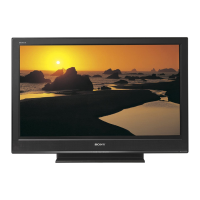
Do you have a question about the Sony BRAVIA KDL-32D28xx and is the answer not in the manual?
Instructions in English for operating the TV.
Instructions in Russian for operating the TV.
Instructions in Polish for operating the TV.
Instructions in Czech for operating the TV.
Instructions in Slovak for operating the TV.
Instructions in Hungarian for operating the TV.
Welcome message and advice to retain the manual for future reference.
Information on recycling old electrical and electronic equipment.
Information on the availability of Digital TV (DVB) services.
Trademark for Digital Video Broadcasting.
Trademark for audio enhancement technology.
Trademark for audio processing technology.
Trademark for High-Definition Multimedia Interface.
List of items included with the TV.
Instructions for connecting TV to signal sources.
Safety instructions for ensuring TV stand stability.
List of TV models for cable connection guidance.
Steps for connecting the TV to the power outlet.
Procedure for the initial power-up of the TV.
Choosing the desired display language for the TV menus.
VCR setup procedure before auto-tuning the TV.
Command to initiate the auto-tuning process.
Choosing the signal source (Antenna or Cable) for tuning.
Organizing the order of tuned TV channels.
Command to start the cable tuning process.
Choosing between Quick Scan and Full Scan methods.
Initiating the channel search for cable reception.
Caution regarding the removal of the TV stand.
General safety guidelines for TV installation.
Specifics on TV placement and wall-mounting.
Safe handling procedures during TV movement.
Ensuring proper airflow around the TV unit.
Spacing requirements for a TV placed on its stand.
Spacing requirements for a wall-mounted TV.
Safe usage and handling of the power cord.
Advice on eye strain prevention and viewing conditions.
Information regarding the characteristics of the LCD screen.
Care and maintenance instructions for the TV screen and cabinet.
Placement advice for peripheral devices near the TV.
Button to turn the TV on or off from standby mode.
Feature for selecting stereo or bilingual audio output.
Buttons used for specific menu functions and features.
Button to choose between different video input sources.
Accesses viewing options and picture/sound adjustments.
Opens the main settings and configuration menu.
Mode optimized for movie viewing experience.
Buttons for direct channel selection.
Returns to the last viewed TV channel.
Buttons for sequential channel navigation.
Button to silence the TV's audio output.
Buttons to adjust the TV's sound level.
Button to switch to digital TV reception mode.
Button to switch to analogue TV reception mode.
Exits menus or returns to the previous screen.
Accesses the TV's digital electronic program schedule.
Function to pause the current video image.
Adjusts the aspect ratio of the displayed picture.
Displays program information or reveals Teletext data.
Accesses the main settings menu on the TV.
Selects input sources and confirms menu options.
Controls the TV's sound level.
Navigates through TV channels sequentially.
Button to turn the TV on or off.
Indicates when the picture is off or a timer is set.
Lights up when the TV is in standby mode.
Indicates power status and timer recording activity.
Receives infrared signals from the remote control.
Procedure to turn the TV on from standby mode.
Mode selection for digital or analogue broadcast reception.
Methods for changing TV channels using buttons or EPG.
Icons indicating status of digital broadcast channels.
Other viewing functionalities like volume and program index.
Activates the Teletext service and cycles through modes.
Navigates through Teletext pages using number buttons.
Freezes the current Teletext page display.
Uncovers hidden information within Teletext pages.
Enables faster access to Teletext pages.
Activates the picture freeze function.
Moves the frozen picture window on the screen.
Exits the picture freeze mode.
Restores the TV display to normal mode.
Cycles through available screen aspect ratios.
List of available tools for picture and sound adjustments.
Accessing the EPG for digital broadcast channels.
General guide to performing actions within the EPG.
Selecting a program to watch directly from the EPG.
Exiting the EPG display screen.
Organizes EPG listings by genre or category.
Schedules a recording for a program via the EPG.
Sets a reminder for an upcoming program from the EPG.
Chooses a future program to be recorded.
Accesses the manual recording setup screen.
Sets the desired date for the program recording.
Defines the recording start and end times.
Confirms the chosen program for recording.
Finalizes the timer recording setup.
Accesses the timer list for recordings or reminders.
Navigates through the list of scheduled timers.
Chooses a specific timer entry to remove.
Confirms the cancellation of a selected timer.
Finalizes the cancellation process.
Overview of the favorite channel list functionality.
Accesses the main TV menu.
Navigates to the favorite channel list settings.
Guide to managing favorite channel lists.
Setting up a new favorite channel list.
Selecting channels directly from a favorite list.
Exits the favorite channel list function.
Modifying entries within an existing favorite channel list.
Clears all channels from a selected favorite list.
Guide to connecting external devices to the TV.
Viewing content via a Scart connection.
Selecting VCR input channels for viewing.
Switching between various external input sources.
Connecting headphones for personal audio output.
Setting up Conditional Access Modules for pay TV.
Connecting external sound systems for enhanced audio.
Switching back to standard TV viewing.
Viewing the list of available input sources.
Adjusting audio volume for HDMI connected devices.
Silencing the audio output from HDMI devices.
List of available picture and sound adjustments.
Overview of HDMI CEC interlock features.
Wiring requirements for HDMI control compatibility.
Configuring HDMI control on the TV and connected devices.
How to operate the TV's menu system.
Accessing and managing favorite channels.
Switching to analogue TV channels.
Switching to digital TV channels.
Accessing the digital program guide.
Selecting external device sources.
Accessing advanced TV configuration options.
Selecting preset picture styles (Vivid, Standard, Cinema).
Adjusting display settings for PC input.
Controls the overall brightness of the screen.
Adjusts the difference between light and dark areas.
Adjusts the lightness or darkness of the picture.
Adjusts the intensity or saturation of colors.
Adjusts the green tone balance of the picture.
Adjusts the clarity and definition of the picture.
Adjusts the white balance of the picture (Cool, Neutral, Warm).
Selecting various sound profiles (Standard, Dynamic, BBE ViVA).
Adjusts the high-frequency sound.
Adjusts the low-frequency sound.
Controls the left/right speaker sound output balance.
Restores all sound settings to factory defaults.
Selects stereo or bilingual audio channels.
Maintains consistent volume levels across different programs.
Adjusts screen format and size (Auto Format, Screen Format).
Optimizes energy consumption (Standard, Reduce, Picture Off).
Configures audio signal output for the AV2 socket.
Adjusts the horizontal position of the picture.
Automatically turns off the TV after a set period.
Manually sets the TV's internal clock.
Sets specific on/off times for the TV.
Initiates the first-time setup process for language and channels.
Selects the menu display language.
Automatically scans for and tunes channels.
Reorders the analogue channel list.
Assigns custom names to input sources.
Selects the TV broadcast system (e.g., B/G, I).
Manually tunes specific channels.
Assigns custom names to channels.
Fine-tunes reception for better picture quality.
Options for tuning digital channels.
Automatic scan for digital channels.
Manages digital channel order and removal.
Manual tuning process for digital channels.
Sets or changes the parental lock PIN.
Enables automatic detection and storage of new services.
Manages automatic TV software updates.
Displays current software version and signal level.
Manually selects the local time zone.
Manages automatic adjustment for Daylight Saving Time.
Technical specifications of the display unit.
Diagonal measurement of the TV screen.
Number of pixels in width and height of the screen.
Energy usage details during TV operation.
Power draw of the TV when in standby mode.
Physical size measurements of the TV unit.
Weight of the TV unit.
Details about the LCD panel technology used.
Supported analogue and digital TV standards.
Supported video input standards (PAL, SECAM, NTSC).
Specifications for the aerial connection.
Range of analogue and digital channels supported.
Descriptions of all TV input and output ports.
Diagnosing issues indicated by a flashing standby light.
General checks for issues when the standby light is not flashing.
Solutions for various picture-related problems.
Solutions for various sound-related problems.
Solutions for channel selection and reception issues.
Troubleshooting common operational problems.
Steps to resolve issues with the remote control.
Resolving problems with HDMI device recognition.
Troubleshooting issues with channel tuning.

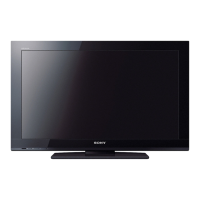
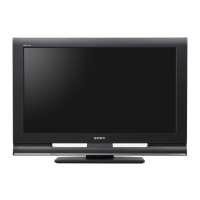

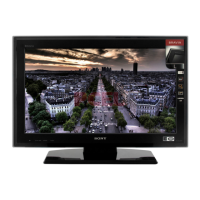
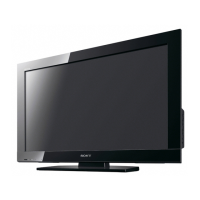
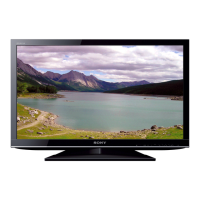

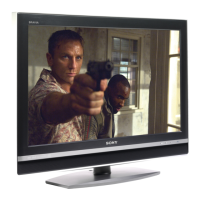
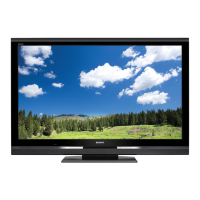


